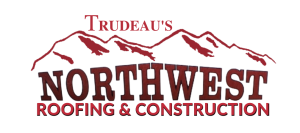Commercial roofing refers to the roofing systems installed on commercial buildings, such as offices, warehouses, retail stores, and industrial facilities. These roofs are designed to protect the structure from weather elements, provide insulation, and enhance energy efficiency.
Here are some key points about commercial roofing:
Types of Commercial Roofing: There are various types of roofing materials used in commercial applications. Some common options include:
- Built-Up Roofing (BUR): Consists of multiple layers of asphalt and reinforcing fabric or felts.
- Single-Ply Membrane Roofing: Made of flexible sheets of synthetic materials like TPO (Thermoplastic Olefin), PVC (Polyvinyl Chloride), or EPDM (Ethylene Propylene Diene Monomer).
- Metal Roofing: Durable and long-lasting, often made of steel, aluminum, or copper.
- Modified Bitumen: Similar to BUR but with added polymers for increased flexibility and strength.
- Green Roofs: Featuring vegetation or plants, they provide environmental benefits and insulation.
Roofing System Components: Commercial roofing systems consist of various components, including:
- Roof Deck: The base layer, typically made of plywood or metal, on which the roof is installed.
- Insulation: Materials placed between the roof deck and the weatherproofing layer to provide thermal protection.
- Membrane or Roofing Material: The topmost layer that protects against water, UV rays, and other environmental factors.
- Flashing: Metal strips or sheets used to prevent water penetration at joints, edges, and other vulnerable areas.
- Drainage: Roof design includes systems for water runoff, such as gutters, downspouts, and internal drains.
Installation and Maintenance: Commercial roofing installation and maintenance should be performed by qualified professionals. Regular inspections, maintenance, and repairs are essential to ensure the roof’s longevity and prevent leaks or damage. Maintenance tasks may include cleaning drains, inspecting flashings, and identifying any signs of wear or deterioration.
Roofing Regulations and Codes: Building codes and regulations often dictate specific requirements for commercial roofing systems, including fire resistance, wind uplift ratings, and energy efficiency standards. It is crucial to comply with these regulations during installation or when making modifications.
Roofing Contractors: Hiring an experienced and reputable roofing contractor is vital for commercial roofing projects. Consider contractors with a proven track record, proper licensing, insurance, and warranties on their workmanship and materials. Requesting multiple bids and checking references can help you make an informed decision.
Energy Efficiency: Many commercial buildings strive to improve energy efficiency through their roofing systems. This can involve selecting materials with high solar reflectance, utilizing insulation to reduce heat transfer, and considering options like cool roofs or green roofs.
